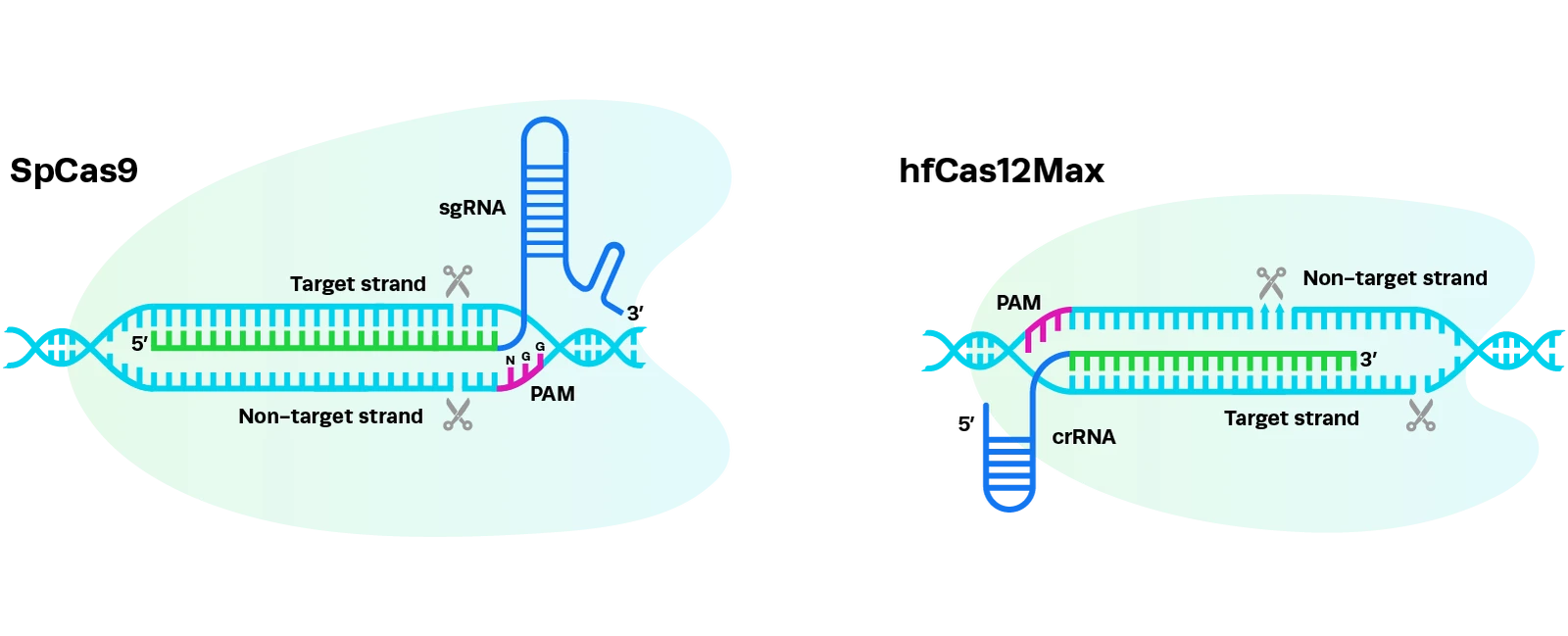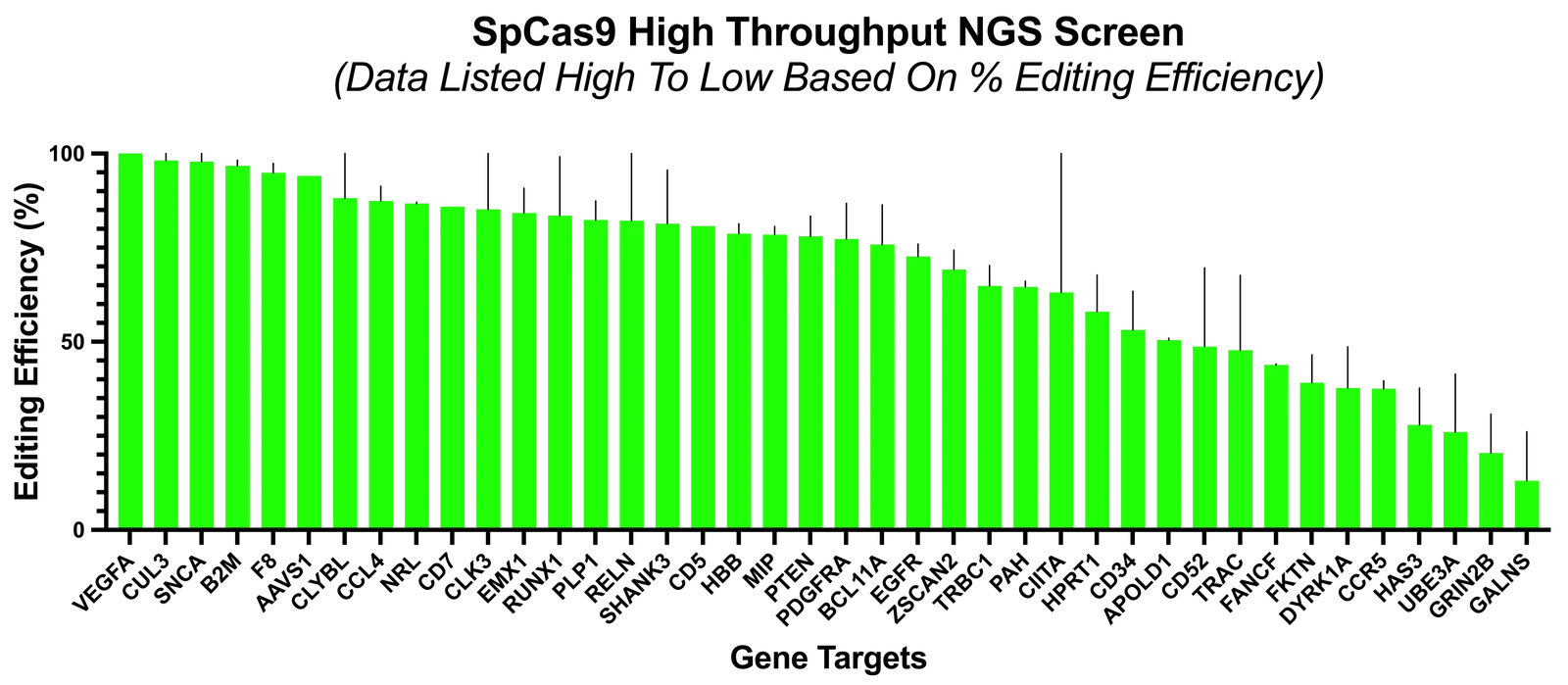Since its discovery in the Nobel Prize-winning publication, Cas9 nuclease has been used repeatedly in various applications spanning protein visualization studies, the generation of disease models, agriculture improvements, and most notably, in the cell and gene therapy space making it the gold standard in CRISPR gene editing. Of the different Cas9 nuclease variants, the most widely known is Streptococcus pyogenes (SpCas9). To maximize its efficacy, researchers and scientists know that complexing SpCas9 nuclease with synthetic sgRNA enables them to achieve desirably high editing efficiencies needed to be successful in their CRISPR experiments and therapeutic development. However, not all SpCas9 nuclease variants sourced from different companies provide the high efficiency needed to be successful at gene editing.
For over a decade, we have been a leader in providing CRISPR solutions that unlock new discoveries and treatments. As a leader, we provide a highly efficient SpCas9 nuclease that leads to the robust and reliable genome editing results you need. To maximize the efficacy of genome editing, our SpCas9 nuclease has two nuclear localization signals (2NLS) to enhance its transport from the cytoplasm into the nucleus. When complexed with our best-in-class Research sgRNA, SpCas9 nuclease precisely makes blunt end double-strand break roughly 3 bases nucleotides upstream of the protospacer adjacent motif (PAM) - in this case, SpCas9 nuclease PAM sequence is 5′-NGG-3′. The results speak for themselves, researchers and scientists have been using our SpCas9 nuclease and Research sgRNA to make groundbreaking discoveries and so can you.
Whether you are developing revolutionary therapies or conducting cutting-edge research, our SpCas9 nuclease provides the precision and reliability you need.


